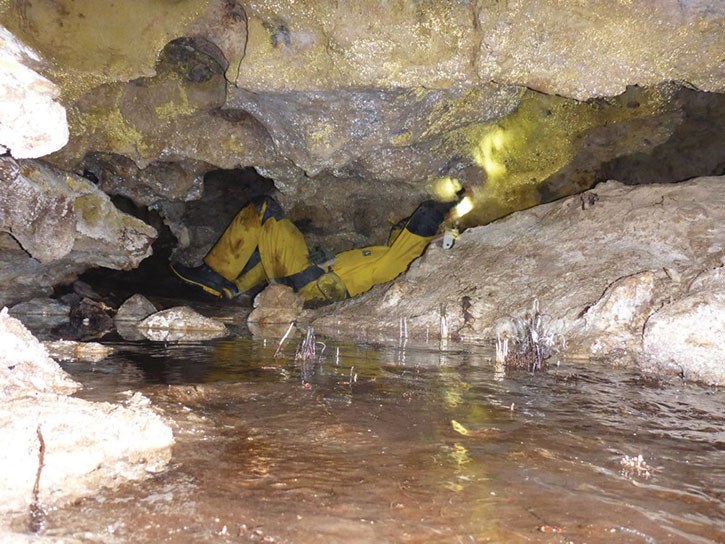 Parks Canada scientists have recently discovered the only bat hibernacula so far known to exist in Kootenay, Banff and Yoho National Parks.
Parks Canada scientists have recently discovered the only bat hibernacula so far known to exist in Kootenay, Banff and Yoho National Parks.
The hibernacula — a cave in which bats hibernate over winter — was located near the Icefields Parkway (Highway 93) in the northwestern portion of Banff National Park on December 21st, and is a significant find.
“We are really excited about this, since not a lot is known about bats in Banff, Yoho and Kootenay,” Parks Canada wildlife ecologist Anne Forshner told The Echo.
Forshner specializes in dealing with species of concern, and added that the discovery is extra important because the cave is likely home to little brown myotis bats (one of three types of bats species that were recently listed as “at-risk” by Environment Canada a bit more than a year ago).
“We’re pretty sure it is little brown myotis,” said Forshner, adding that she and the other scientists are waiting for confirmation on that from the labs, where samples of bones and guano found in the cave were sent for analysis.
The presence of the bones and guano suggests that the bats have been using the cave for an extended period of time and this winter’s roosting is not a one-off event, she added.
Little brown myotis, as well as northern myotis and tri-coloured bats, were listed as at-risk because of white-nose syndrome, a fungus that has decimated (and in some cases virtually eliminated) huge swaths of bat populations in eastern North America. Part of the impetus to learn more about bats in western Canada — and to do so quickly — is the possibility of the syndrome spreading right across the continent.
“We’d really like to better understand bats here. We don’t know much and we need to know more because this illness (white-nose syndrome) is spreading westward. We’re trying to play catch-up in terms of knowing what species we have, where they live, and how many there are,” said Forshner. “Worldwide bats have an ecological role that is quite important. In particular, they are insect-eaters. In one night, an adult bat can consume up to half it’s body weight in insects.”
Finding the hibernacula is especially critical because it is while hibernating that bats are most susceptible to white-nose syndrome. The efforts by scientists to locate hibernacula and bat maternity roosts (another critical piece of habitat for bats) in Banff, Kootenay and Yoho are part of the larger North America Bat Monitoring Program. Finding the Banff bat cave in December was a bit of surprise, and came partly because of a dying battery.
Scientists had set up bat recording equipment along the Icefields Parkway in the fall near caves and mines, and were planning to come back in spring to check the equipment for evidence of bats.
“But in this case, we knew the battery was going to fail, so we went in to switch it, and that’s when we found the bats,” said Forshner.
The scientists are keen to see what other evidence of bat caves they might find when they check the rest of the equipment in spring and continue with the project.
“Our next step will be working down through Kootenay National Park with our recording equipment,” said Forshner. “We will be in Kootenay this summer.”
There is no evidence of white-nose syndrome in bats living in Banff, Yoho or Kootenay National Parks, but seven bat species in 25 states and five provinces (Nova Scotia, New Brunswick, Prince Edward Island, Ontario and Quebec) have been so far diagnosed with the disease.
The exact location of the bat cave has not been disclosed, and access to caves and mines in national parks is limited, requiring written permission of the park superintendent.
